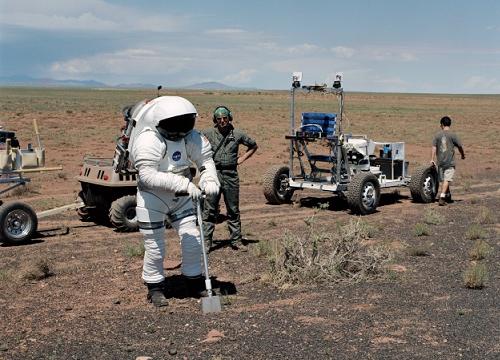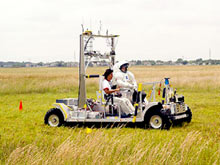This car is not very bright, it does not drag on the first places in the car sales table and it can only travel 10 kilometers. But the models that will follow it will be able to reach places where no 4x4 vehicle has reached before them and when they get there they will be able to perform some amazing actions

The vehicle in question is SCOUT, an acronym for Science Crew Operations and Utility Testbed project and is made by NASA.
The project is designed to develop smart all-terrain vehicles for use on the moon, Mars and possibly beyond. Lunar vehicles have already been used in three Apollo missions. Scout is the start of a new generation of multi-purpose vehicles, which will be used for much longer research and development missions.
Such vehicles that astronauts will drive will be able to carry equipment and supplies. They will also be able to respond to voice commands and hand gestures. The current experimental scout vehicle can operate via wireless remote control and perform some essential operations independently via autopilot. Eventually they will work in collaboration not only with humans but also with robots that are currently under development.
So far, the vehicle has been tested by divers wearing space suits, astronauts, engineers and others. The experiments with the vehicle, which has two seats, were carried out mainly at the Johnson Space Center in Houston.

The current Scout can climb a slope at an angle of 10 degrees (equivalent to 30 degrees in the gravity of Mars.), reach a speed of 11 km/h and jump over rocks 30 centimeters high. The improvements can include, among other things, new ideas in smart software, a place to stay for the crew members, improvements in the power supply, communication and more.
